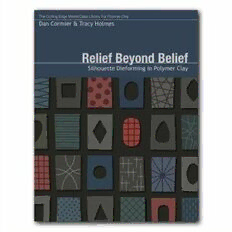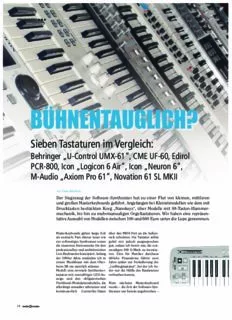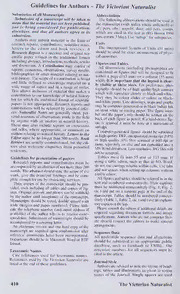
Remote Pilot – Small Unmanned Aircraft Systems PDF
Preview Remote Pilot – Small Unmanned Aircraft Systems
FAA-S-ACS-10 F U.S. Department of Transportation Federal Aviation Administration Remote Pilot – Small Unmanned Aircraft Systems Airman Certification Standards July 2016 Flight Standards Service Washington, DC 20591 Acknowledgments The U.S. Department of Transportation, Federal Aviation Administration (FAA), Airman Testing Standards Branch, AFS-630 (P. O. Box 25082, Oklahoma City, OK, 73125) developed this Airman Certification Standards (ACS) document with the assistance of the subject matter experts in the area related to small Unmanned Aircraft Systems (sUAS). Availability This ACS is available for download from www.faa.gov. Please send comments regarding this document to AFS630comments@faa.gov. Material in FAA-S-ACS-10 will be effective August 29, 2016. i Foreword The Federal Aviation Administration (FAA) has published the Remote Pilot – small Unmanned Aircraft Systems (sUAS) Airman Certification Standard (ACS) document to communicate the aeronautical knowledge standards for a Remote Pilot Certificate with an sUAS rating. The FAA views the ACS as the foundation to an integrated and systematic approach to airman certification. The ACS is part of the safety management system (SMS) framework that the FAA uses to mitigate risks associated with airman certification training and testing. Specifically, the ACS, associated guidance, and test question components of the airman certification system are constructed around the four functional components of an SMS: 1. Safety Policy that defines and describes aeronautical knowledge and risk management as integrated components of the airman certification system; 2. Safety Risk Management processes through which internal stakeholders identify and evaluate regulatory changes, safety recommendations, or other factors that require modification of airman testing and training materials; 3. Safety Assurance processes to ensure the prompt and appropriate incorporation of changes arising from new regulations and safety recommendations; and 4. Safety Promotion in the form of ongoing engagement with both external stakeholders and FAA policy divisions. The FAA has developed the ACS with the goal to drive a systematic approach to all components of the airman certification system which includes the knowledge test question development, course development, and guidance material. The FAA acknowledges and appreciates the many hours that these aviation experts have contributed toward this goal. This level of collaboration, a hallmark of a robust safety culture, strengthens and enhances aviation safety at every level of the airman certification system. John S. Duncan Director, Flight Standards Service ii Revision History Document # Description Revision Date Remote Pilot – Small Unmanned Aircraft FAA-S-ACS-10 July 2016 Systems Airman Certification Standards iii Table of Contents Introduction ................................................................................................................................................................. 1 Airman Certification Standards Concept ................................................................................................................. 1 Using the ACS ......................................................................................................................................................... 1 I. Regulations .......................................................................................................................................................... 2 Task A. General................................................................................................................................................... 2 Task B. Operating Rules ..................................................................................................................................... 3 Task C. Remote Pilot Certification with an sUAS rating ..................................................................................... 4 Task D. Waivers .................................................................................................................................................. 5 II. Airspace Classification and Operating Requirements ............................................................................................ 6 Task A. Airspace Classification ........................................................................................................................... 6 Task B. Airspace Operational Requirements ...................................................................................................... 7 III. Weather ................................................................................................................................................................. 8 Task A. Sources of Weather ............................................................................................................................... 8 Task B. Effects of Weather on Performance ....................................................................................................... 9 IV. Loading and Performance .................................................................................................................................. 10 Task A. Loading and Performance .................................................................................................................... 10 V. Operations .......................................................................................................................................................... 11 Task A. Radio Communications Procedures .................................................................................................... 11 Task B. Airport Operations ................................................................................................................................ 12 Task C. Emergency Procedures ....................................................................................................................... 13 Task D. Aeronautical Decision-Making ............................................................................................................. 14 Task E. Physiology ............................................................................................................................................ 15 Task F. Maintenance and Inspection Procedures ............................................................................................. 16 Appendix Table of Contents ..................................................................................................................................... 18 iv This page intentionally left blank. v Introduction Airman Certification Standards Concept The goal of the airman certification process is to ensure the applicant possesses knowledge consistent with the privileges of the Remote Pilot Certificate with a small Unmanned Aircraft Systems (sUAS) rating being exercised, as well as the ability to manage the risks of flight in order to act as a remote pilot-in-command (PIC). In fulfilling its responsibilities for the airman certification process, the Federal Aviation Administration (FAA) Flight Standards Service (AFS) plans, develops, and maintains materials related to airman certification testing. These materials include several components. The FAA knowledge test measures mastery of the aeronautical knowledge areas listed in Title 14 of the Code of Federal Regulations (14 CFR) part 107. Other materials, such as airman knowledge testing supplements in the FAA-CT-8080 series and an FAA online training course, provide guidance to applicants on aeronautical knowledge and risk management. The FAA recognizes that safe operations in today's complex National Airspace System (NAS) require a more systematic integration of aeronautical knowledge, risk management and flight proficiency standards. The FAA further recognizes the need to more clearly calibrate knowledge and risk management to the level of the Remote Pilot Certificate with an sUAS rating. The ACS integrates the elements of knowledge and risk management in 14 CFR part 107 for a Remote Pilot Certificate with an sUAS rating. It thus forms the comprehensive standard for what an applicant must know and consider to successfully completing each Task tested on the knowledge test. In keeping with this integrated and systematic approach, the knowledge Task elements of each Task identify what the applicant must know and understand for sUAS operations conducted under part 107. The applicant demonstrates this understanding by passing the knowledge test. Using the ACS The sUAS ACS includes Areas of Operation and Tasks for the initial issuance of a Remote Pilot Certificate with an sUAS rating. Each Task in the ACS is coded according to a scheme that includes four elements. For example: UA.I.B.K10: UA = Applicable ACS (Unmanned Aircraft Systems) I = Area of Operation (Regulations) B = Task (Operating Rules) K10 = Task element Knowledge 10 (Visual line of sight (VLOS) aircraft operations) Knowledge test questions are mapped to the ACS codes, which will soon replace the system of Learning Statement Codes (LSC). After this transition occurs, the Airman Knowledge Test Report (AKTR) will list an ACS code that correlates to a specific Task element for a given Area of Operation and Task. The LSCs translations may be found at www.faa.gov. Each LSC provides the applicant with information that will assist in future test taking. The current knowledge test management system does not have the capability to print ACS codes. Until a new test management system is in place, the LSC, such as Pilot Learning Statement (PLT) codes will continue to be displayed on the AKTR. The PLT codes are linked to references leading to broad subject areas. By contrast, each ACS code is tied to a unique Task element in the ACS itself. Because of this fundamental difference, there is no one-to-one correlation between PLT codes and ACS codes. For those applicants who do not pass the knowledge test, remedial instruction and an endorsement from an instructor is not required for retesting. See Appendix A for details on passing the Unmanned Aircraft General – Small (UAG) knowledge test. The FAA encourages applicants to use this ACS as a reference while preparing for the knowledge test. The FAA will revise this ACS as circumstances require. 1 I. Regulations Task Task A. General References 14 CFR part 107, subpart A; AC 107-2 To determine that the applicant is knowledgeable in the general regulatory requirements of Objective 14 CFR part 107. Knowledge The applicant demonstrates understanding of: UA.I.A.K1 1. The applicability of 14 CFR part 107 to small unmanned aircraft operations. UA.I.A.K2 2. Definitions used in 14 CFR part 107. 3. The ramification of falsification, reproduction, or alteration of a certificate, rating, UA.I.A.K3 authorization, record, or report. UA.I.A.K4 4. Accident Reporting. UA.I.A.K5 5. Inspection, testing, and demonstration of compliance. Risk [Reserved] Management Skills [Not applicable] 2 I. Regulations Task Task B. Operating Rules References 14 CFR parts 47, 48 and 107, subpart B; AC 107-2 To determine that the applicant is knowledgeable of the operating rules of 14 CFR part Objective 107, the registration rules of 14 CFR parts 47 and 48, and other associated operating requirements. Knowledge The applicant demonstrates understanding of: UA.I.B.K1 1. Registration requirements for sUAS. UA.I.B.K2 2. The requirement for the sUAS to be in a condition for safe operation. UA.I.B.K3 3. Medical condition(s) that would interfere with safe operation of an sUAS. UA.I.B.K4 4. The responsibility and authority of the remote PIC. UA.I.B.K4a a. Allowing a person other than the remote PIC to manipulate the flight controls. UA.I.B.K5 5. Regulatory deviation and reporting requirements for in-flight emergencies. UA.I.B.K6 6. Hazardous operations. UA.I.B.K6a a. Careless or reckless UA.I.B.K6b b. Dropping an object UA.I.B.K7 7. Operating from a moving aircraft or moving land- or water-borne vehicle. UA.I.B.K8 8. Alcohol or drugs and the provisions on prohibition of use. UA.I.B.K9 9. Daylight operation. UA.I.B.K10 10. Visual line of sight (VLOS) aircraft operations. UA.I.B.K11 11. The requirements when a visual observer is used. UA.I.B.K12 12. The prohibition of operating multiple sUAS. UA.I.B.K13 13. The prohibition of carrying hazardous material. UA.I.B.K14 14. Staying safely away from other aircraft and right-of-way rules. a. See and avoid other aircraft and other potential hazard considerations of the UA.I.B.K14a remote PIC UA.I.B.K15 15. Operations over human beings. UA.I.B.K16 16. Prior authorization required for operation in certain airspace. UA.I.B.K17 17. Operating in the vicinity of airports. UA.I.B.K18 18. Operating in prohibited or restricted areas. 19. Flight restrictions in the proximity of certain areas designated by notice to airmen UA.I.B.K19 (NOTAM). UA.I.B.K20 20. Preflight familiarization, inspection, and actions for aircraft operations. UA.I.B.K21 21. Operating limitations for sUAS. UA.I.B.K21a a. Maximum groundspeed UA.I.B.K21b b. Altitude limitations UA.I.B.K21c c. Minimum visibility UA.I.B.K21d d. Cloud clearance requirements UA.I.B.K22 22. The requirements for a Remote Pilot Certificate with an sUAS rating. Risk [Reserved] Management Skills [Not applicable] 3 I. Regulations Task Task C. Remote Pilot Certification with an sUAS rating References 14 CFR part 107, subpart C; AC 107-2 To determine that the applicant is knowledgeable in the requirements associated with Objective remote pilot certification with an sUAS rating. Knowledge The applicant demonstrates understanding of: UA.I.C.K1 1. Offenses involving alcohol or drugs. 2. The consequences of refusing to submit to a drug or alcohol test or to furnish test UA.I.C.K2 results. UA.I.C.K3 3. The eligibility requirements for a Remote Pilot Certificate with an sUAS rating. UA.I.C.K4 4. Aeronautical knowledge recency. Risk [Reserved] Management Skills [Not applicable] 4
Description:The list of books you might like

The 48 Laws of Power

The Strength In Our Scars

Shatter Me Complete Collection (Shatter Me; Destroy Me; Unravel Me; Fracture Me; Ignite Me)

Credence

By Marc Abrams, Ema-st Page

NASA Technical Reports Server (NTRS) 20110015537: Historic Emissions from Deforestation and Forest Degradation in Mato Grosso, Brazil: 1. Source Data Uncertainties

Relief Beyond Belief. Silhouette Dieforming in Polymer Clay

TCPS 1267-2549: JOB'S TEARS PRODUCTS

Byzantine Gospel Maximus the Confessor in Modern Scholarship

Greek Government Gazette: Part 4, 2005 no. 1152

The Minimum Method: The Least You Can Do to Be a Stronger, Healthier, Happier You

Børns angst for venepunktur

bühnentauglich?

Flat-Coated Retriever

Büchi’s Monadic Second Order Successor Arithmetic

The Natural History of Chocolate by D de Quelus

C ' ical management of abortion complications - World Health

Caracterização da Pesca Artesanal e Amadora na Área de Influência do Novo Porto

Chhattisgarh Gazette, 2006-01-20, No. 3, Pt. 3 (2)

Ships Company Book 1




